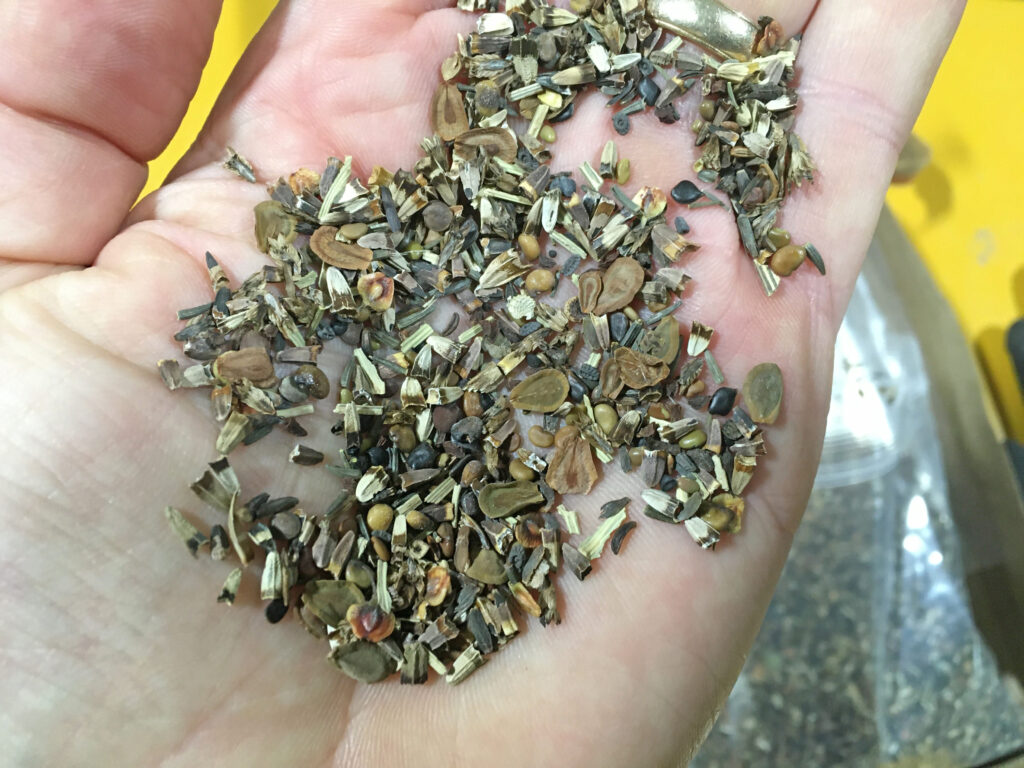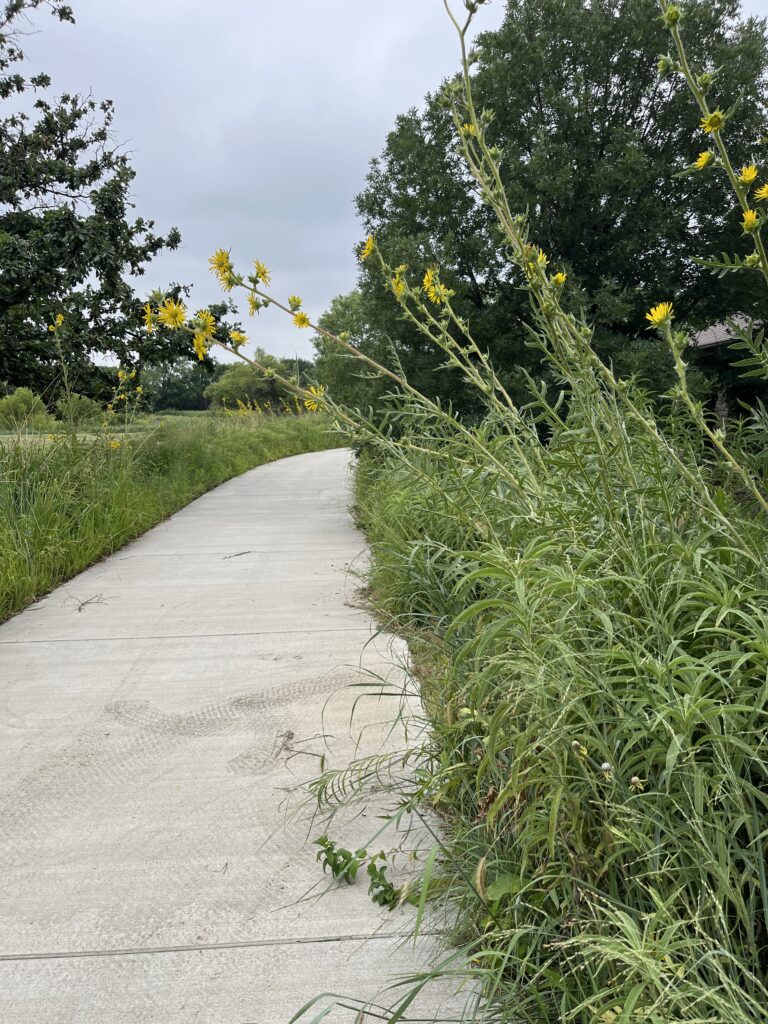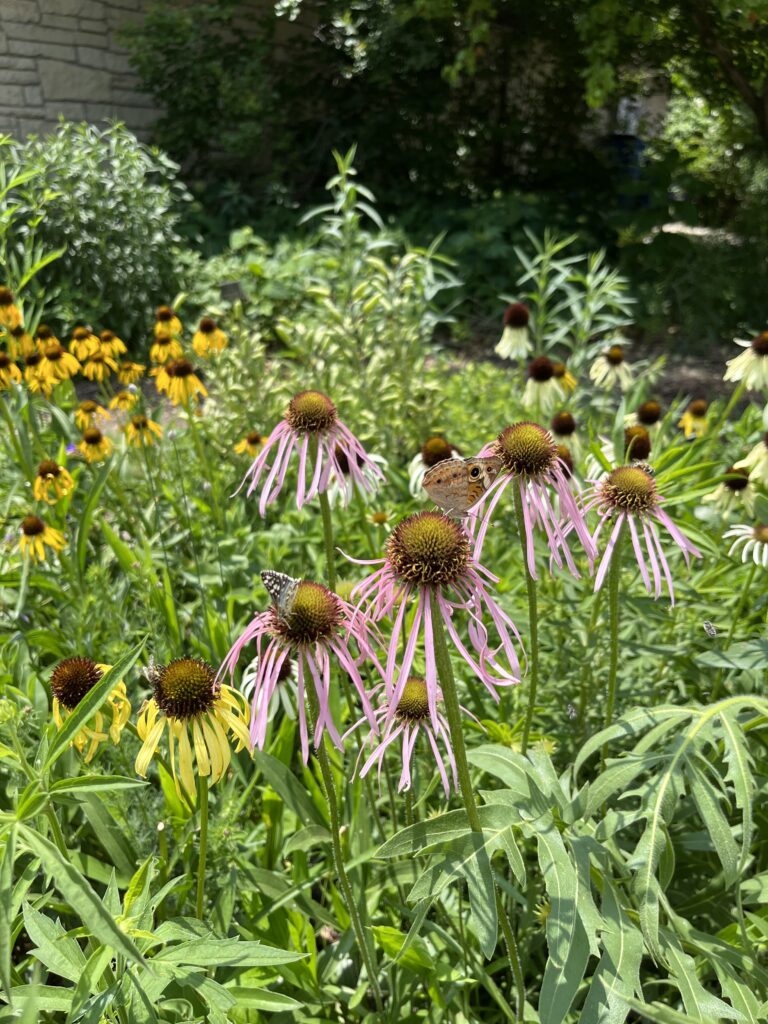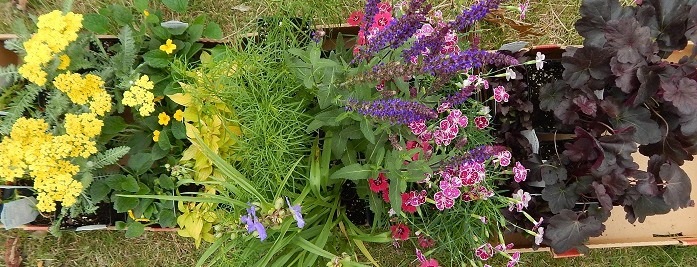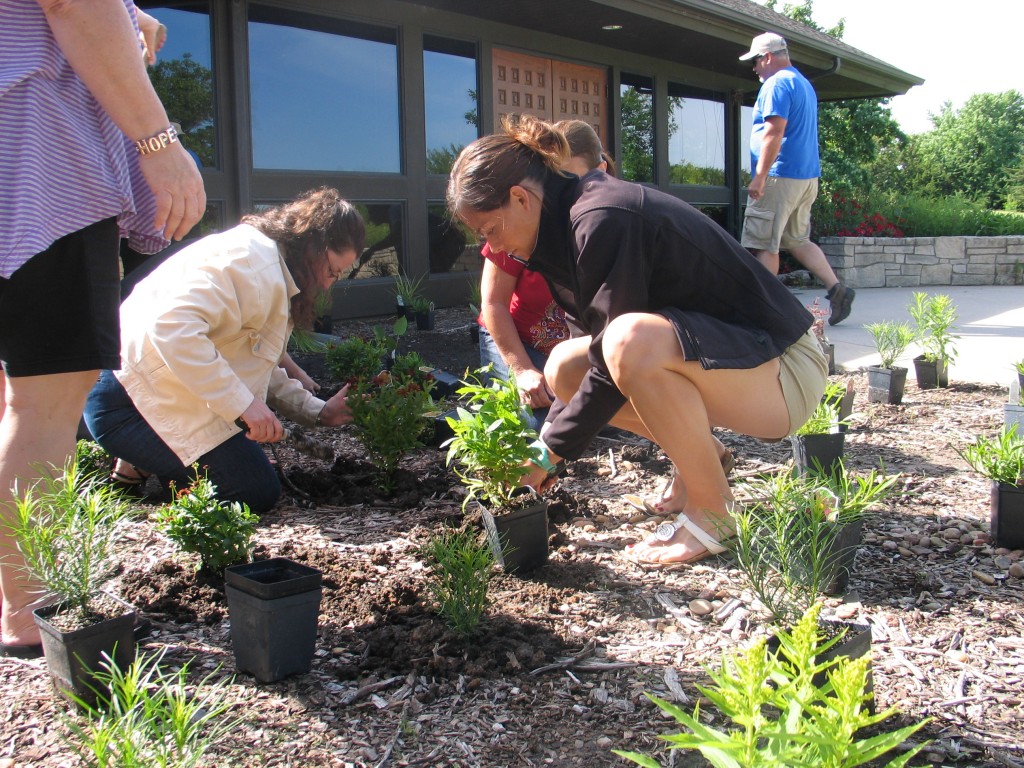Kansas summers can discourage even the hardiest gardeners. However, taking time to manage your garden now will help your garden later. Here’s my Summer Garden Checklist for the Kansas gardener.
Control Warm Season Weeds
Summer brings with it a new set of weeds to control. Hot weather germinates summer annuals like crabgrass, foxtail. Nutsedge and other weeds invade your lawn and landscape as well. Manage weeds using nonchemical methods such as cultivation, hand weeding, or mowing; use toxic chemicals as a last resort.
Mowing regularly and occasionally edging along sidewalks and walkways is needed to ensure your lawn is not overrun with weeds. In a landscaped bed, hand pull any of these weeds, especially if they have seed heads. It is so important to not let these weeds go to seed. Stay vigilant even though the summer heat tries to squash your enthusiasm. A little extra effort now will make your garden better this fall and into next year.
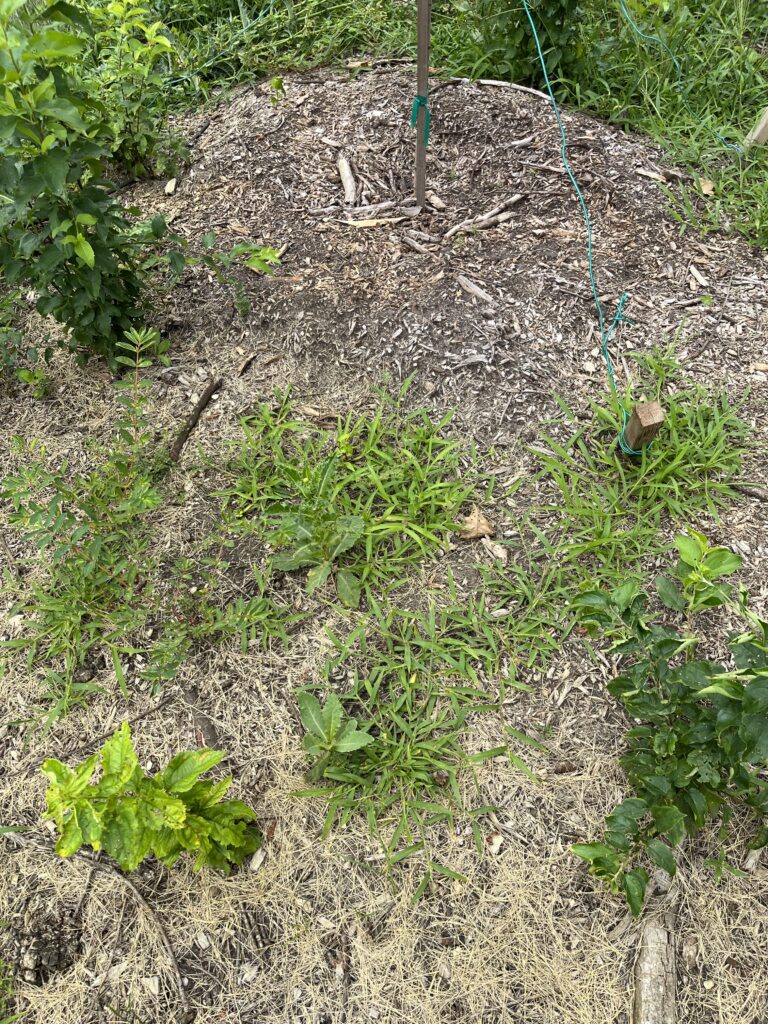
Be Water Wise
To reduce evaporation, water when temperatures are cooler and air is still, usually in the early morning. Water deeply to moisten the root zone, but infrequently. About an inch of water each week is a good rule of thumb! If you have invested in container plants, they will need daily watering, as soil in pots can dry out quickly and damage plant roots on hot summer days. Each of our gardens have indicator plants that show stress first, let these plants be your guide as when to water. For new planting started this spring, water when the top one to two inches of soil is dry. Remember it takes three to five years for sustaining roots systems to develop for most native plants. Supplemental watering is necessary to encourage growth and root development in these young plants.

Prepare for seeding
If you are wanting to establish native prairie plants from seed, now is a great time to prepare your area. Mow your area short (1-2 inches). Control perennial weeds such as bindweed or Bermuda grass by carefully spraying the area with Roundup. It will take several applications to get these problematic weeds under control. If you can see soil, tillage is not necessary. If you can’t see soil, till lightly to expose some bare soil. Remember, each time you till, you bring up more weed seeds, so tread lightly.
Measure your area and order a seed mixture that matches your site. A good seed mix ratio of wildflower to grass is 70% wildflowers to 30% grasses. Grasses tend to dominate over time, so this ratio will give the wildflowers a good start. We typically spread seed in November and December after the soil temperature has dropped enough to discourage germination. The natural freeze/thaw of the ground will work the seeds down into the soil to the proper depth for germination next spring.
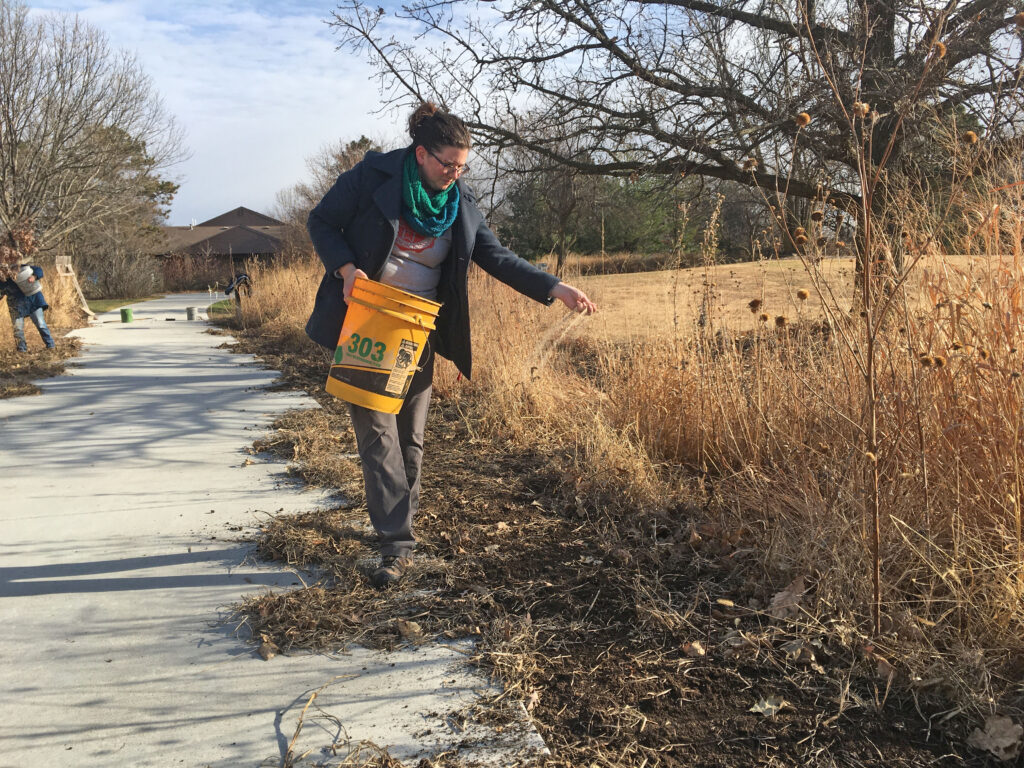
Trim
Now is a great time to trim back perennials that have become unruly. Perennial and grasses that are encroaching sidewalks, paths, and structures can be sheared back to size. If this is a problem every year, you may consider moving the taller plants to another spot. Plants can be divided next February or March before they start to actively grow.
Low hanging branches from trees can also be pruned. It is getting late in the season to do much pruning on shrubs. New growth may not have enough time to get hardened off before cooler/colder weather. If a branch or shoot is in the way, then prune it, but prune sooner rather than later. If you can wait until the shrub goes dormant this fall, then wait.
As a general rule, early spring flowering shrubs such as forsythia, lilac and spirea should be pruned right after they are done blooming since they bloom on the previous year’s growth. Pruning right after blooming will allow the shrub to grow and develop a new set of buds for the next spring.
Finally, remember “WHY” you are gardening; creating habitat, conserving water, aesthetics, attracting pollinators, attracting birds and other wildlife or curb appeal. Let your “WHY” reinvigorate you to take care of a few extra tasks that will give your landscape a boost. Don’t sweat the small stuff and don’t forget to step back to enjoy what you are trying to create. If it is all work and no enjoyment, then what is the point.

